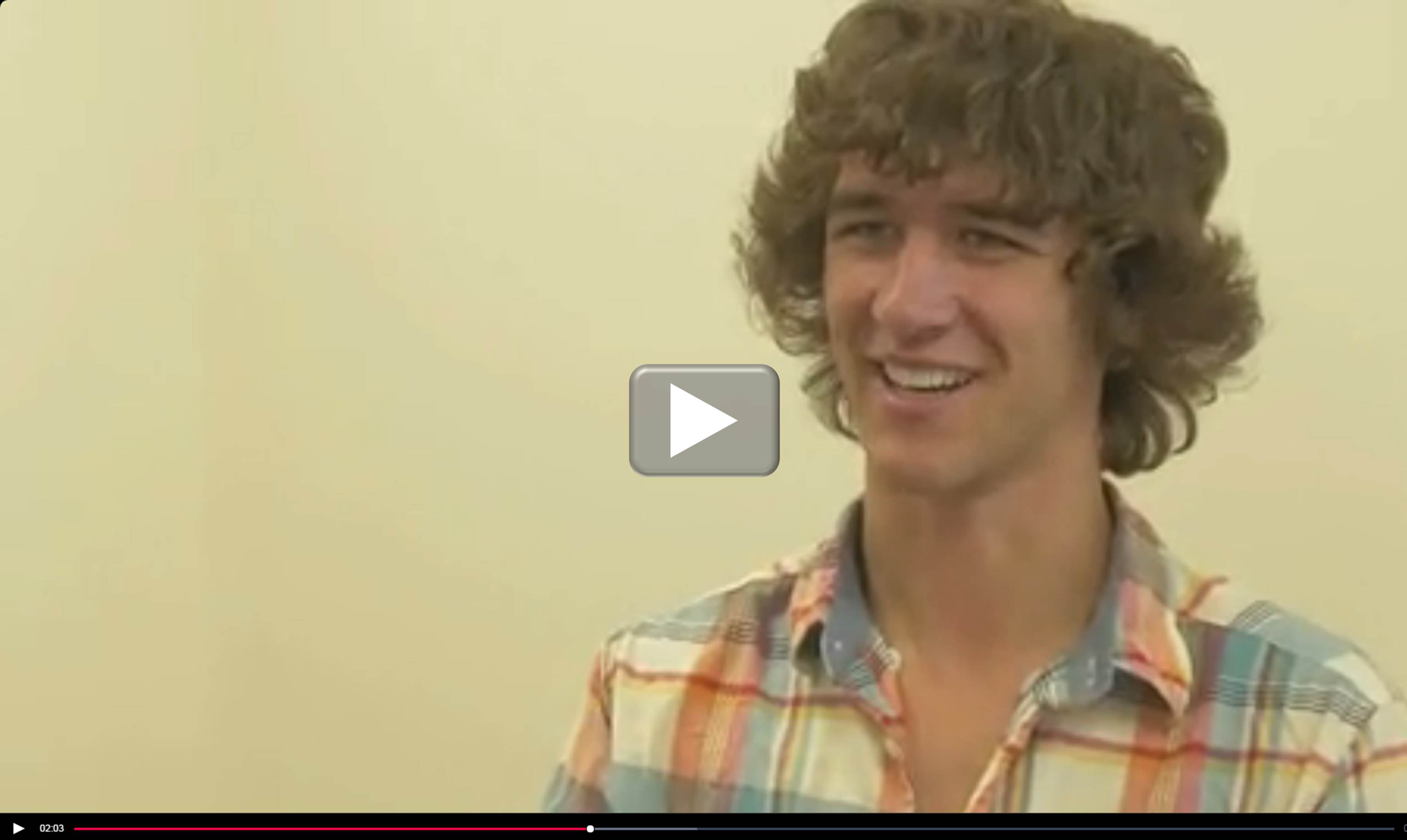LabTV: Curious about Computer Modeling of Proteins
Posted on by Dr. Francis Collins
In many ways, Josh Carter is a typical college student, with a hectic schedule packed with classes and social activities. But when he enters a structural biology lab at Montana State University in Bozeman, Carter encounters an even faster paced world in which molecular interactions can be measured in femtoseconds—that is, 1 millionth of 1 billionth of 1 second.
Working under the expert eye of principal investigator Blake Wiedenheft, Carter is applying his computational skills to X-ray crystallography data to model the structures of various proteins, as well as to chart their evolution over time and map their highly dynamic interactions with other proteins and molecules. This basic science work is part of this NIH-funded lab’s larger mission to understand how bacteria defend themselves from the viruses that try to infect them. It’s a fascinating area of science with a wide range of potential applications, from treating diseases that arise from imbalances in the microbiome (the communities of microbes that live in and on our bodies) to developing new methods for gene editing and programmable control of gene expression.
Carter grew up in northeast South Dakota, where exploring the great outdoors made him curious about biology and life in general. His parents—a farmer and a journalist—nurtured this inquisitiveness and encouraged him to read books on science, math, and engineering. After heading off to Montana for college, Carter chose dual majors in mechanical engineering and microbiology.
Now a senior, Carter is a recipient of one of the university’s competitive undergraduate research internships, which has given him a head start on a career in science. He’s already been a coauthor on some peer-reviewed papers, including one featured on the cover of the journal Science in 2014. [1] The lab experience has also helped Carter develop a healthy perspective on the scientific process and, as this video shows, a real gift for explaining biological complexities in remarkably clear terms.
For young people intimidated by the thought of working in a high-powered lab as an intern or volunteer, Carter offers these words of encouragement: Mistakes happen, especially when you’re an undergraduate, and everyone knows that. In Carter’s case, he says both he—and his science—have benefited immensely from being “around a bunch of like-minded people who are excited about the same stuff you are.”
Reference:
[1] Structural biology. Crystal structure of the CRISPR RNA-guided surveillance complex from Escherichia coli. Jackson RN, Golden SM, van Erp PB, Carter J, Westra ER, Brouns SJ, van der Oost J, Terwilliger TC, Read RJ, Wiedenheft B. Science. 2014 Sep 19;345(6203):1473-1479.
Links:
Wiedenheft Lab (Montana State University, Bozeman)
Science Careers (National Institute of General Medical Sciences/NIH)
Careers Blog (Office of Intramural Training/NIH)

